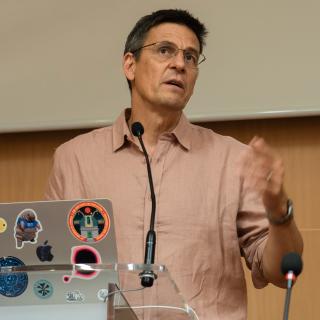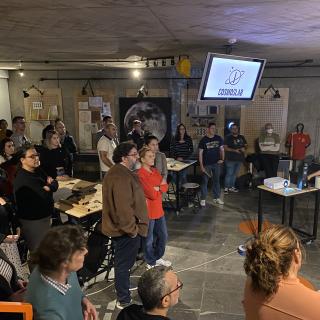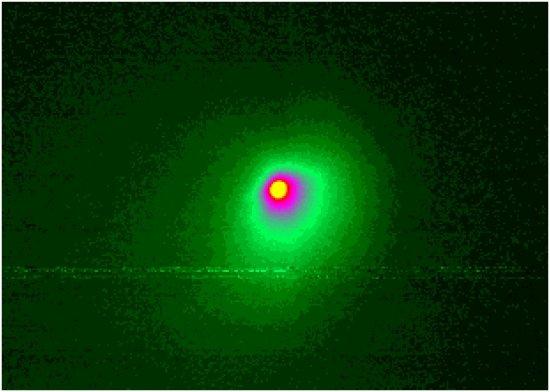It may interest you
-
 El programa de divulgación científica del Instituto de Astrofísica de Canarias (IAC) en La Radio de Canarias, " Soñando Estrellas" , emitirá su próximo episodio este viernes, 5 de diciembre, a las 22:30 horas, y posteriormente estará disponible en plataformas digitales . E l espacio, de 30 minutos de duración aproximada , y está dirigido y presentado por Verónica Martín . En este episodio, la investigadora del IAC y de la Universidad de La Laguna , Adriana de Lorenzo-Cáceres Rodríguez , hablará de qué tienen en común nuestra galaxia, la Vía Láctea, con sus galaxias ‘primas’ similares a ellaAdvertised on
El programa de divulgación científica del Instituto de Astrofísica de Canarias (IAC) en La Radio de Canarias, " Soñando Estrellas" , emitirá su próximo episodio este viernes, 5 de diciembre, a las 22:30 horas, y posteriormente estará disponible en plataformas digitales . E l espacio, de 30 minutos de duración aproximada , y está dirigido y presentado por Verónica Martín . En este episodio, la investigadora del IAC y de la Universidad de La Laguna , Adriana de Lorenzo-Cáceres Rodríguez , hablará de qué tienen en común nuestra galaxia, la Vía Láctea, con sus galaxias ‘primas’ similares a ellaAdvertised on -
 The Instituto de Astrofísica de Canarias (IAC) welcomed the visit of Professor Didier Queloz, Nobel Laureate in Physics and co-discoverer of the first exoplanet orbiting a Sun-like star. Professor Queloz's stay at the IAC has focused on instrumental development and technological collaboration. As part of his agenda, he also gave a lecture entitled ‘Exoplanets: the next frontier’ in the IAC Lecture Hall. The researcher visited the IAC to supervise the installation of a new high-stability spectrograph on the Isaac Newton Telescope (INT) at the Roque de los Muchachos Observatory on La PalmaAdvertised on
The Instituto de Astrofísica de Canarias (IAC) welcomed the visit of Professor Didier Queloz, Nobel Laureate in Physics and co-discoverer of the first exoplanet orbiting a Sun-like star. Professor Queloz's stay at the IAC has focused on instrumental development and technological collaboration. As part of his agenda, he also gave a lecture entitled ‘Exoplanets: the next frontier’ in the IAC Lecture Hall. The researcher visited the IAC to supervise the installation of a new high-stability spectrograph on the Isaac Newton Telescope (INT) at the Roque de los Muchachos Observatory on La PalmaAdvertised on -
 El proyecto educativo “CosmoLab: del aula al Sistema Solar”, desarrollado por el Instituto de Astrofísica de Canarias (IAC) y financiado principalmente por el Cabildo de Tenerife, anuncia la apertura de matrícula del nuevo curso “CosmoViaje 2.0: lo que sabemos e ignoramos del Universo” en colaboración con la Consejería de Educación del Gobierno de Canarias. Esta iniciativa busca acercar la astronomía a toda la comunidad educativa de Tenerife y fomentar el conocimiento y disfrute de los excepcionales cielos y observatorios de Canarias. CosmoLab persigue promover la cultura científica en elAdvertised on
El proyecto educativo “CosmoLab: del aula al Sistema Solar”, desarrollado por el Instituto de Astrofísica de Canarias (IAC) y financiado principalmente por el Cabildo de Tenerife, anuncia la apertura de matrícula del nuevo curso “CosmoViaje 2.0: lo que sabemos e ignoramos del Universo” en colaboración con la Consejería de Educación del Gobierno de Canarias. Esta iniciativa busca acercar la astronomía a toda la comunidad educativa de Tenerife y fomentar el conocimiento y disfrute de los excepcionales cielos y observatorios de Canarias. CosmoLab persigue promover la cultura científica en elAdvertised on
